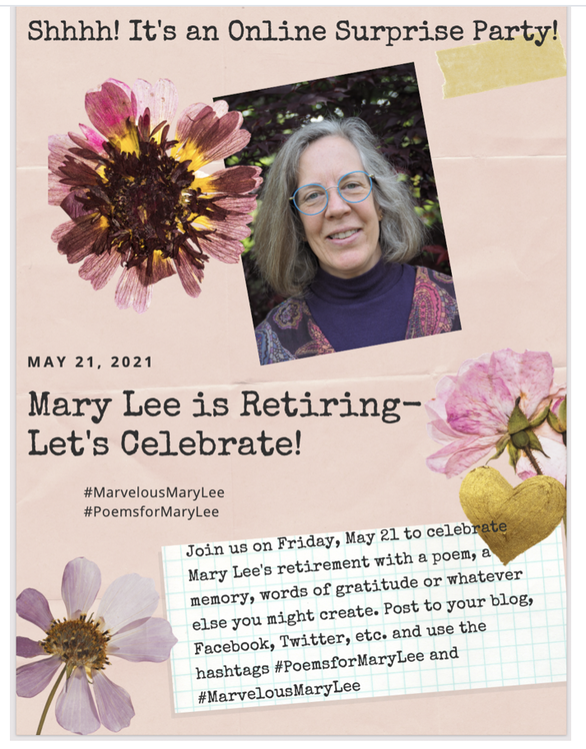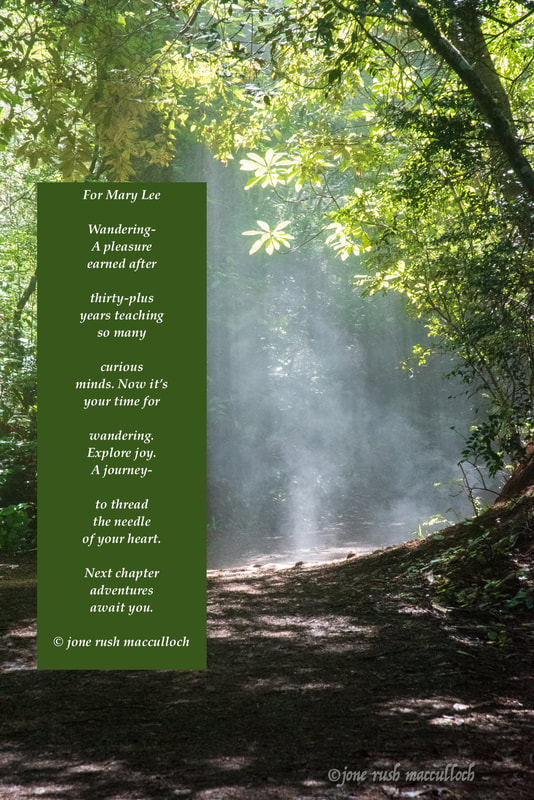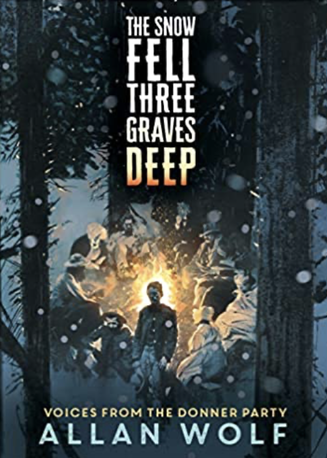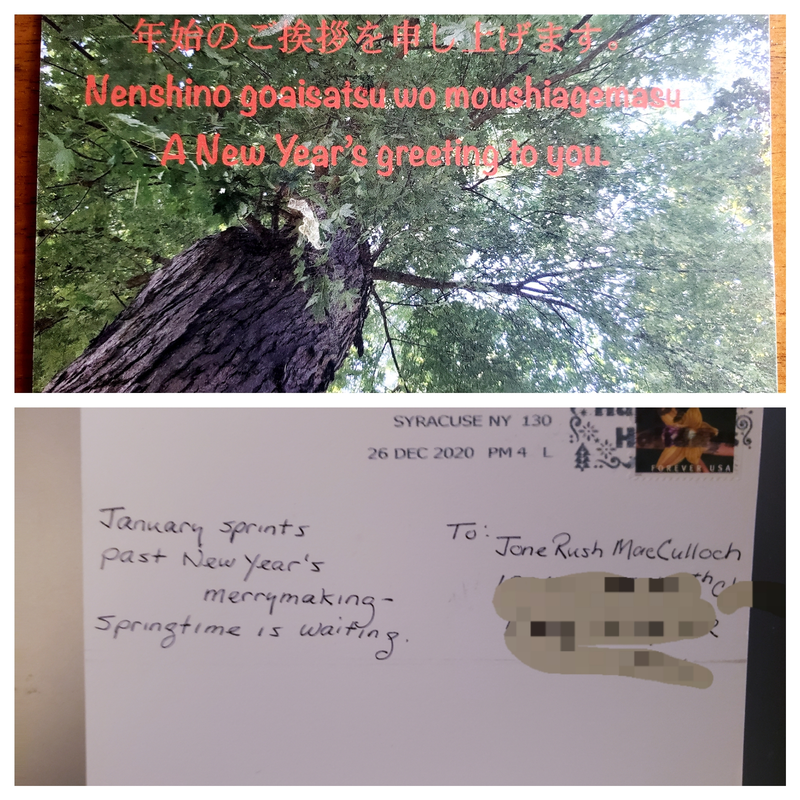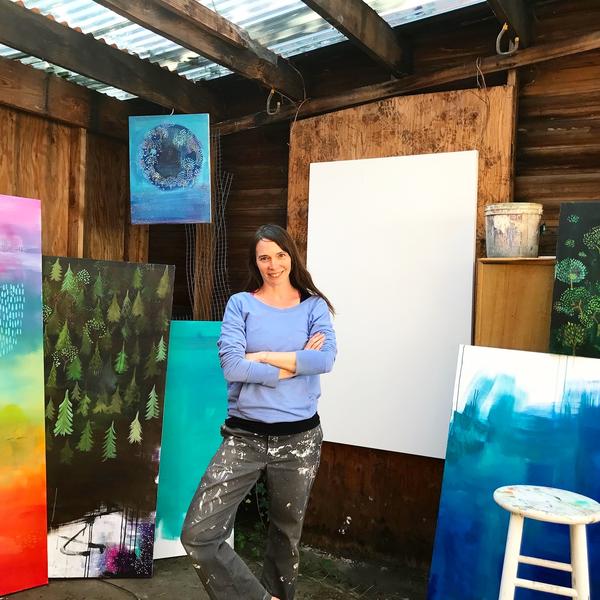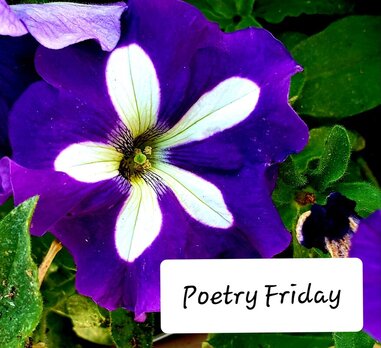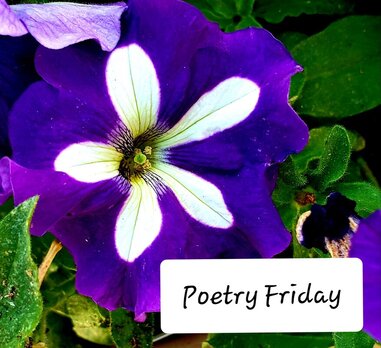 Matt at Radio, Rhythm & Rhyme has hosting duties this Poetry Friday. Matt has a terrific interview with Leslie Bulion. Here I have an interview with Sally Walker. Thanks to Mary Lee, I got in touch with Anne Irza-Leggat at Candlewick Press. She connected me with two poets for this month that have new books coming out in April. In the fall, I will be interviewing two more poets when their books arrive in the world.  From Sally Walker's Website From Sally Walker's Website Meet Sally Walker. This picture tell me that she and I could be great friends as I love a good hug with a tree. from early readers to nature books STEM books, history and picture books, Sally has written so many. Earth Verse was her first book written in haiku. Her latest, Out of This World: Star-Studded Haiku, is as she says a "language spaceship" . Through haiku, readers will travel the universe. There's great back matter at the end of the book. Sally was gracious to answer questions I had for her. I loved learning about the diamonds that a certain planet has (read the interview to find out).  JRM: How did you get the idea for Out of This World: Star-Studded Haiku? What was your process for writing this book? SW: The idea began with a haiku that I wrote about Saturn: Rings of rock and dust/circle around Saturn’s waist/cosmic Hula-Hoops. It made me smile, as I remembered summer days spent playing with a Hula-Hoop. It became part of a manuscript with the working title Sci-ku. As I have done in many of my books, I wanted to create a book that would as a bridge to connect science with literature—one that combined facts and language play. Sci-ku’shaiku ranged from geology, to space, to physics, and to biology. I submitted the manuscript to Hilary Van Dusen, my editor at Candlewick. She liked the idea, but felt that the book would be more effective if all of the haiku immersed the reader in one particular scientific field. She was absolutely correct! I narrowed the focus to geology, my number one science love. The manuscript became Earth Verse: Haiku from the Ground Up. The haiku about Saturn ended up on the cutting room floor. Sadly, because I really liked that one. After completing Earth Verse, Hilary asked if I was working on anything else. I wasn’t, but suddenly the “cosmic Hula-Hoops” haiku popped back into my mind. My email reply to her suggested that I do a companion volume to Earth Verse that could be titled Out of This World: Star-studded Haiku. Of course I included the haiku about Saturn among those that I submitted in my formal proposal! Part of my process for writing Out of This World was paying attention to the stars, planets, and the moon as they appear to move across the sky as Earth rotates. Early morning, just before dawn, is my favorite time to be outside. Even on the coldest days, I go for a walk and look at the moon and the stars. Another part of my process was to look at the stellar—ha, ha, that pun was too good to resist—photos on the National Aeronautics and Space Administration’s (NASA) website, www.nasa.gov. It’s an awesome website where one can spend hours immersed in all kinds of space-related information. The photos are beyond belief!! JRM: I think one of the best parts about writing is doing research for a topic. What kind of research did you do for Out of This World? SW: Research is, hands down, my favorite part of being an author! An important part of writing this book, which later morphed into research, came from re-living experiences from my childhood. For example, I remember sitting in the backyard with my father on summer nights. He would point out different constellations—Orion and the Big Dipper are two vivid memories—and tell me stories about how they got their name. My family always watched lunar and solar eclipses. We always used the pinhole in cardboard way to view a solar eclipse safely. One Christmas, when I was about 10 years old, my cousin received a telescope as a gift. He invited us to his house one night so we could see Saturn’s rings. That blew me away! Maybe that’s how Galileo felt when he first saw them. In July 1969, half the people in our neighborhood crowded around the television in my family’s livingroom and watched the Eagle land on the moon. We all held our breath until it touched down and then cheered!! Reality TV at its absolute best!!! I researched scientific papers, books, old newspapers, and NASA’s website about all of these topics for additional information, as well as important updates, to material that I remembered from childhood. Interestingly, research that I’d done for other books gave me a lot of information for Out of This World. My research adventures for Boundaries, my book about the Mason-Dixon line, led to planetarium visits and lots of stargazing. Charles Mason and Jeremiah Dixon drew their famous line of latitude guided by the position of stars. My husband, a volcanologist, was happy to talk with me about the Martian volcano Olympus Mons, the largest volcano in our solar system. In college, when I majored in geology, I learned that scientists theorize that an asteroid strike 65 million years ago likely led to the extinction of dinosaurs on Earth. It seemed natural for me to write a haiku about that. JRM: What was the most surprising discovery you had in writing this book? SW: Good question! One discovery that I knew absolutely NOTHING about was that it rains diamonds on the planet Uranus. That planet, one of our solar system’s four planets that have no solid land surface, has a slushy plasma ocean that surrounds the planet’s solid core. The pressure within the ocean forces carbon atoms to crystallize as diamonds. Because the diamonds are heavier than the surrounding “slush,” they rain downward, toward the core. This discovery also led to a funny research story. When Matthew Trueman was creating the illustration for the haiku diamonds rain, unseen/in a slushy plasma sea/sunken treasure trove, he asked what color the sea was likely to be. I had NO idea. So, I did some research. I emailed Dr. Dirk Gericke and asked him. He is a professor at the Centre for Fusion, Space & Astrophysics, in the Department of Physics, at the University of Warwick, in the United Kingdom. Dr. Gericke has written several papers on Uranus’s plasma sea. He helped me tweak the haiku so it was accurate, but he also consulted with his colleagues about the color of the plasma ocean. While no one can actually see it, their consensus (based on the chemical composition) is that the sea is bluish. I passed this information along to Matthew! JRM: What led you to write this book in haiku? How do you decide if you want to write in prose or haiku? SW: It was always intended to be a combination of haiku and nonfiction prose. My favorite haiku are those that not only make me think or feel about something, but also make me want to discover something new about the “moment” that I encountered while reading a particular haiku. I hope that the haiku in Out of This World will make readers think and ask questions. The narrative section of the book, hopefully, provides answers to some of those questions. Haiku is pretty much the only kind of poetry that I write. But I did not always enjoy it. I remember being taught about haiku in fourth grade. The teacher explained what it was: a short poem that did not rhyme, had only seventeen syllables, and revealed a profound, seasonal moment in nature. We didn’t talk about Japanese culture at all. Nor did we discuss how “less” can actually be “more.” She just read us a few haiku written by Basho and Issa. Sadly, I was too young to appreciate them—at least the ones she read to us. They made me feel “itchy” because I didn’t understand what they were about. When she asked us to write haiku, I felt like I was being asked to write something so profound that it was incomprehensible. Forcing the incomprehensible into a seventeen-syllable, non-rhyming poem made the assignment essentially impossible for me. Now, as an adult, I read a haiku like Basho’s The Old Pond (An old silent pond/a frog jumps into the pond--/Splash! Silence again.) and marvel at it. But the nine-year-old me wouldn’t have understood and appreciated all it encompasses. I would not have savored that exquisite last moment. I would have splashed into the pond and caught the frog. Today’s young readers meet haiku through the mastery of poets such as Paul Janeczko, Janet Wong, and J. Patrick Lewis. Children easily relate to their poems. They meet the reader in a place or moment that she or he can understand. A park bench, a curbside puddle, a beloved pet. That is incredibly powerful and freeing. Modern haiku poets often step outside the traditional guidelines of including a seasonal reference. And they frequently inject humor. Many of the haiku in Earth Verse and Out of This World explore moments in nature, but they are moments that exist for eons. I remember one of my geology professors telling us that in the timeline of life on Earth, humans have existed in the length of time that it takes to light a match and immediately blow it out. The formation of stars, land surfaces being eroded by glaciers and wind, an asteroid that wipes out millions of years of dinosaur existence are natural, cosmic “moments.” They exist on a timeline, the length of which we can scarcely comprehend. Why not write haiku about them? Although some poets write haiku that don’t strictly adhere to the seventeen-syllable format, I choose to do so. I like the challenge of seeking the perfect combination of words to convey an idea or impression in exactly seventeen syllables. It’s a game with language that lets me play with words, something I love to do. It requires lots and lots and lots of mental revision to get the syllable count for each line correct. That’s cool too, because many of the haiku that I write finally reach their “Eureka!” word-choice completion while I am outside walking and appreciating nature! JRM: What are your upcoming projects? SW: My next book is UNDERGROUND FIRE: HOPE, SACRIFICE, AND COURAGE IN THE CHERRY MINE DISASTER. The 1909 Cherry Mine fire is one of the worst coal mine disasters in United States’ history. My home is only 50 miles from Cherry, Illinois, and the story is one that I have wanted to bring to young readers for some years. It’s especially timely, given that it’s a story of immigrants and fossil fuel, both of which figure prominently in the news today. The publication date is October 2022. I do have another haiku book in the pipeline, scheduled for publication in Spring 2023. At the moment the title is TREES: HAIKU FROM ROOTS TO LEAVES. It's a bit early to share much more about it, but I can say that the illustrations are wonderful! Both books are with Candlewick Press. BONUS I: In another email, Sally and I shared an exchange about writing haiku for adults as well as the haiku structure. She shared this haiku Language meanders, words channeled into patterns. Poetic rivers BONUS II: Regarding haiku versus senryu Sally shared this little fact, I enjoy senryu a lot. In fact, I had to avoid producing them when I wrote Earth Verse and Out of This World. Thank you so much, Sally!
|
AuthorAll photos and poems in these blog posts are copyrighted to Jone Rush MacCulloch 2006- Present. Please do not copy, reprint or reproduce without written permission from me. Categories
All
Archives
July 2024
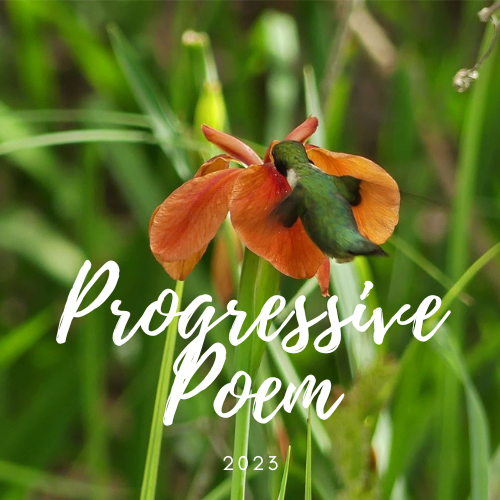
2023 Progressive Poem
April 1 Mary Lee Hahn, Another Year of Reading April 2 Heidi Mordhorst, My Juicy Little Universe April 3 Tabatha, The Opposite of Indifference April 4 Buffy Silverman April 5 Rose Cappelli, Imagine the Possibilities April 6 Donna Smith, Mainely Write April 7 Margaret Simon, Reflections on the Teche April 8 Leigh Anne, A Day in the Life April 9 Linda Mitchell, A Word Edgewise April 10 Denise Krebs, Dare to Care April 11 Emma Roller, Penguins and Poems April 12 Dave Roller, Leap Of Dave April 13 Irene Latham Live You Poem April 14 Janice Scully, Salt City Verse April 15 Jone Rush MacCulloch April 16 Linda Baie, TeacherDance April 17 Carol Varsalona, Beyond Literacy Link April 18 Marcie Atkins April 19 Carol Labuzzetta at The Apples in My Orchard April 20 Cathy Hutter, Poeturescapes April 21 Sarah Grace Tuttle, Sarah Grace Tuttle’s Blog, April 22 Marilyn Garcia April 23 Catherine, Reading to the Core April 24 Janet Fagal, hosted by Tabatha, The Opposite of Indifference April 25 Ruth, There is no Such Thing as a God-Forsaken Town April 26 Patricia J. Franz, Reverie April 27 Theresa Gaughan, Theresa’s Teaching Tidbits April 28 Karin Fisher-Golton, Still in Awe Blog April 29 Karen Eastlund, Karen’s Got a Blog April 30 Michelle Kogan Illustration, Painting, and Writing |


